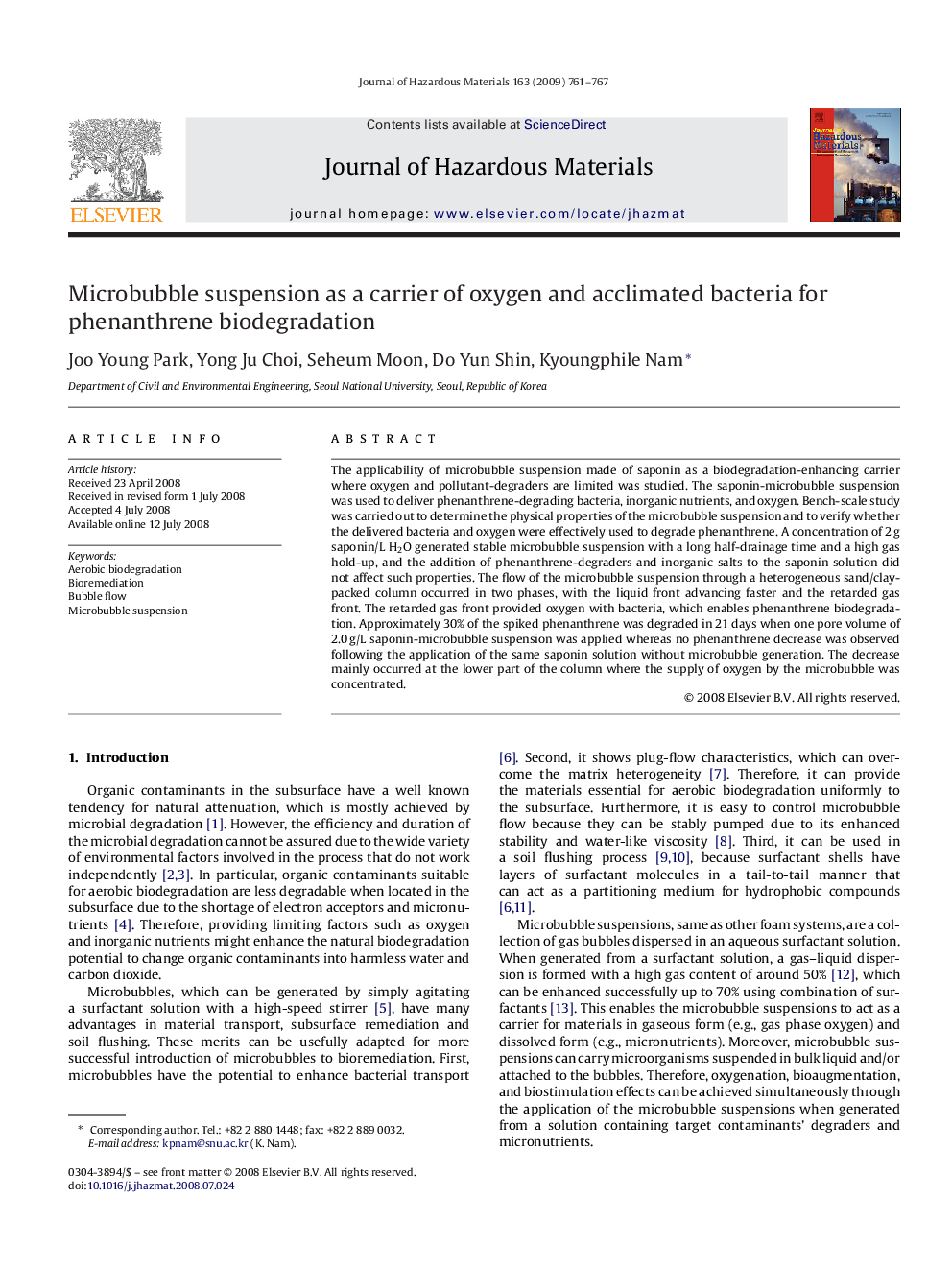| Article ID | Journal | Published Year | Pages | File Type |
|---|---|---|---|---|
| 582120 | Journal of Hazardous Materials | 2009 | 7 Pages |
Abstract
The applicability of microbubble suspension made of saponin as a biodegradation-enhancing carrier where oxygen and pollutant-degraders are limited was studied. The saponin-microbubble suspension was used to deliver phenanthrene-degrading bacteria, inorganic nutrients, and oxygen. Bench-scale study was carried out to determine the physical properties of the microbubble suspension and to verify whether the delivered bacteria and oxygen were effectively used to degrade phenanthrene. A concentration of 2Â g saponin/L H2O generated stable microbubble suspension with a long half-drainage time and a high gas hold-up, and the addition of phenanthrene-degraders and inorganic salts to the saponin solution did not affect such properties. The flow of the microbubble suspension through a heterogeneous sand/clay-packed column occurred in two phases, with the liquid front advancing faster and the retarded gas front. The retarded gas front provided oxygen with bacteria, which enables phenanthrene biodegradation. Approximately 30% of the spiked phenanthrene was degraded in 21 days when one pore volume of 2.0Â g/L saponin-microbubble suspension was applied whereas no phenanthrene decrease was observed following the application of the same saponin solution without microbubble generation. The decrease mainly occurred at the lower part of the column where the supply of oxygen by the microbubble was concentrated.
Related Topics
Physical Sciences and Engineering
Chemical Engineering
Chemical Health and Safety
Authors
Joo Young Park, Yong Ju Choi, Seheum Moon, Do Yun Shin, Kyoungphile Nam,
